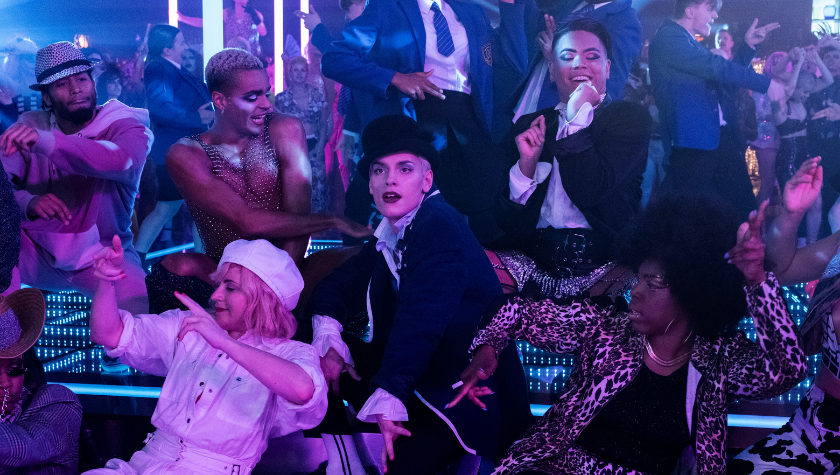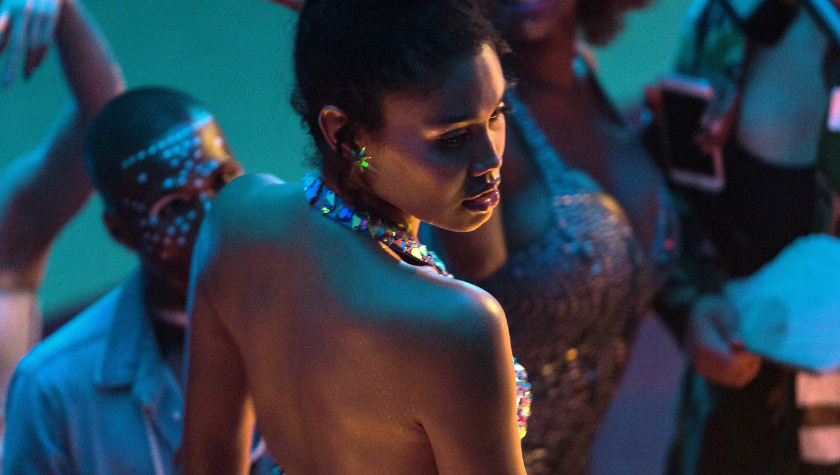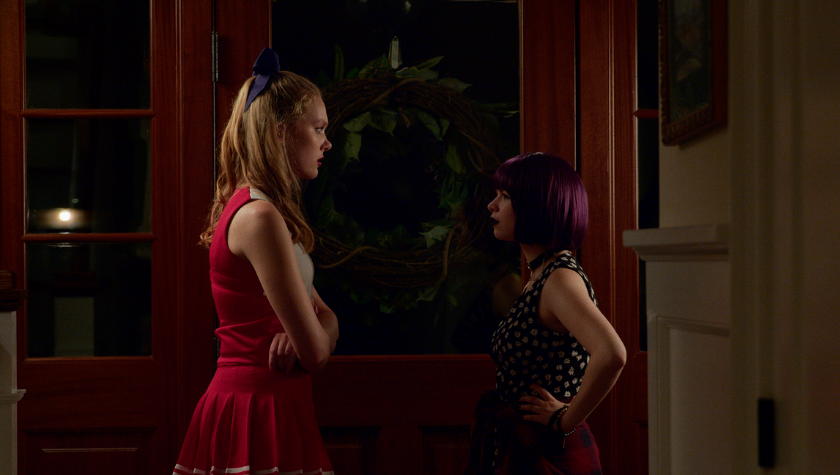Writer-director Scott Boswell explores the dynamics of a grieving family in 'A Wake'
August 26, 2021
After Mitchel’s death, each of his family members cope and grieve in their own way. They prepare for a wake that’ll help them remember him, but unexpected guests and conversations push the family further away from their lost loved one.
Writer-director Scott Boswell paints a portrait of family grief in his second feature film A Wake, which questions why we hurt and how we grow past trauma.
Each family member has their own role in the wake. Mitchel’s little sister, Molly (Sofia Rosinsky), is preoccupied with making sure each detail of the wake is perfect. His older sister, Megan (Megan Trout), toughs through her concerns returning home after a long time away from the family. His twin brother, Mason (Noah Urrea), runs across town for a spiritual connection to the dead, and his grandmother and parents try to act like everything is normal despite the internal chaos of the family unit.
And then there’s Jameson (Kolton Stewart), the unexpected partner from Mitchel’s past who arrives to grieve along with the family but soon realizes the weight his presence has at the table.
In exploring each of their emotions, Boswell says he had to spend time with each character to give them an equitable amount of space to explore their complex feelings.
"Not every character is maybe as savory as the next, but all are flawed and all have redeeming qualities in terms of grief," he said.
"Because the whole film was about grief, that was kind of a centerpiece for identifying how the characters were processing or not, and how it impacted how they were dealing with each other."
In the writing process, Boswell had to step back from preconceived ideas of whose story it is to give attention to each member and fully understand what they are feeling. He also ensures that we aren’t forgetting an important voice to the story: Mitchel.
"I definitely wanted Mitchel to have a voice," Boswell said.
"Mitchel is the brother who has died and because he's talked about so much, I wanted to make sure that we also saw him and that he was represented in the film."
Mitchel, played by the same actor as his twin brother, Mason, speaks through his brother’s internal connection. As Mason daydreams and chases spiritual epiphanies that’ll get him in the same space as his lost twin brother, we hear Mitchel guide him to the truth through symbols and hidden messages. Each hint soon leads Mason to understand Mitchel’s internal struggles, queerness, and relationship with Jameson.
The family spans three generations, allowing Boswell to explore each of their attitudes toward the LGBTQ community.
"I wanted it to feel relatively contemporary with the young generation," he said.
"So they do have a certain comfort with queerness and a certain assumption that there isn't anything wrong with it, which flies directly in the face of the older generation; the parents and the grandmother."
Part of the older generation’s struggle with Mitchel’s queerness is also due to the family’s Baptist background. Their values are put to the test not only through Mitchel’s sexuality, but also through his boyfriend.
Boswell said the role of Jameson is layered and important to his writing because he not only represents queerness, but also the experience of being Black in a predominantly white town.
"My own story is not just a tale of white people and at some point, I realized in my own writing that omitting people of color is literally whitewashing,” he said.
He wanted the world of the film to best represent his environment growing up in the Midwest, all the way down to the realities people of color face. For Jameson’s character as a young Black kid entering a white home, he navigates what it’s like to not fully be welcomed, but persists in being there to honor the dead.
"I grew up in the Midwest in the kind of world where people were too polite to be overtly racist, so everything seemed fine," he said.
"But as I grew older, I started to recognize sorts of elusive microaggressions, like the things people would say and do that made me realize that there was this undercurrent of attitudes toward people of color that aren't okay."
To get the best representation in the film, Boswell had to welcome multiple perspectives when editing and getting feedback on the script.
"I think the best solution that I found is to write the best character I can and then get feedback from other people, and it should be women and queer people and people of color — a variety of perspectives and experiences who can offer critical points of view," he said.
The story is originally inspired by Boswell's friend’s own experience of losing an identical twin. The challenges his friend shared about his grieving led Boswell to explore such a loss through Mason and Mitchel. Grief is something everyone has experienced in one way or another. Grief centers the story on the family as they attempt to look back at a lost loved one in a way that properly represents who he was; even the parts that are difficult to accept.
"The theme that is the umbrella for [the film] is why we hurt the ones we love, and how a functional family — which I would not consider to be a very functional family — accepts, supports and embraces each other," Boswell said.
Breaking Glass is set to release A Wake on August 31.
Written by: Steven Vargas
Steven Vargas is a multimedia journalist based in Los Angeles whose work focuses on arts, entertainment and activism. He is a current grad student at USC Annenberg pursuing an MA in Specialized Journalism (The Arts) and previously graduated from USC with a BA in Theatre and Journalism with a minor in Dance. He is a current member of the Equity Board, a new initiative at Annenberg Media dedicated to diversifying sourcing and promoting inclusive coverage across the publication. His short doc, “Dancing at Home,” earned first place in the LA Press Club’s “Life in the Time of the Coronavirus Contest" in May 2020. More recently, he co-directed "Two Paths: One Direction," an award-winning short documentary produced with students from the USC and Prairie View A&M University about their experiences of 2020. He produced work for ET Live, TheWrap, Dance Magazine, BuzzFeed News, and more. His work can be found here: https://www.vargassteven.com/



